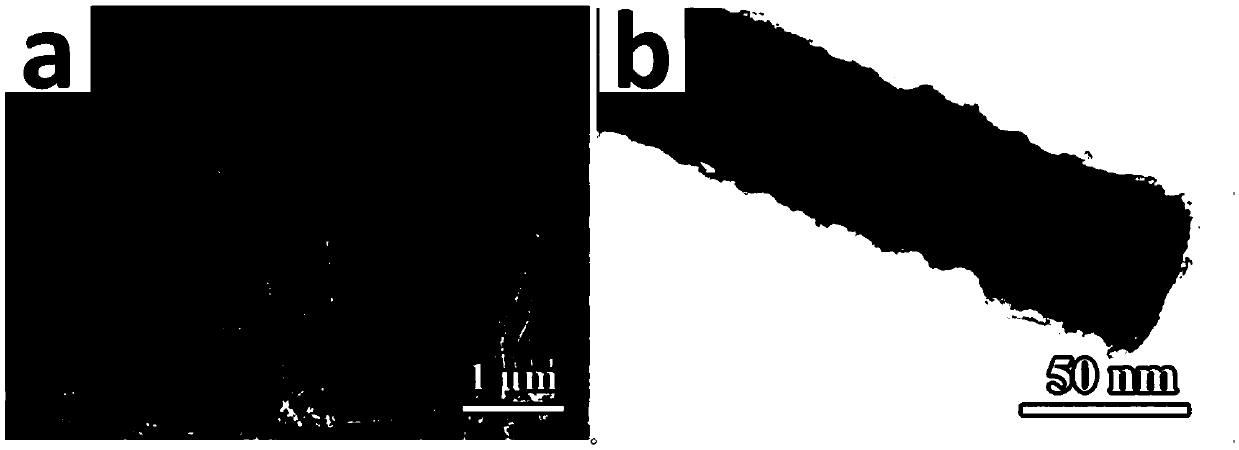Metal oxide-metal-organic frameworks (MOX@MOFs) nanometer core-shell structure one-dimensional array as well as preparation method and application thereof
A nano-core-shell and array technology is applied in the field of gas sensors, which can solve problems such as poor selectivity, achieve high-sensitivity detection, and be easy to promote.
- Summary
- Abstract
- Description
- Claims
- Application Information
AI Technical Summary
Problems solved by technology
Method used
Image
Examples
Embodiment 1
[0026] Weigh zinc chloride and cobalt chloride (Zn:Co=1:1, total molar concentration 0.86mM), add 2.5mL water and 13.5mLDMF to dissolve in the reaction kettle, add 2-methylimidazole (30.4mM) and stir to form Transparent solution, put the ZnO one-dimensional array film grown by hydrothermal method on the sapphire wafer with the face down, put it into the solution, seal the reaction kettle and react at 60°C for 2h, rinse the surface of the composite array film after the reaction, and dry it in the air to dry.
Embodiment 2
[0028] Weigh zinc nitrate and cobalt nitrate (Zn:Co=0:1, total molar concentration 0.86mM), add 0mL water and 16mLDMF to dissolve in the reaction kettle, add 2-methylimidazole (76.0mM) and stir to form a transparent solution, and Solvothermal Growth of TiO on Sapphire Chips by Seed Layer Method 2 Put the one-dimensional array film face down into the solution, seal the reactor and react at 25°C for 12 hours. After the reaction, rinse the surface of the composite array film and dry it in the air.
Embodiment 3
[0030] Weigh zinc chloride and cobalt chloride (Zn:Co=3:1, total molar concentration 0.86mM), add 4mL water and 12mL DMF to dissolve in the reaction kettle, add imidazole (30.4mM) and stir to form a transparent solution, and the seed crystal Hydrothermal Growth of SnO on Polycrystalline Alumina Ceramic Sheets by Layer Method 2 Put the one-dimensional array film face down into the solution, seal the reactor and react at 120°C for 0.5h. After the reaction, rinse the surface of the composite array film and dry it in the air.
PUM
| Property | Measurement | Unit |
|---|---|---|
| Thickness | aaaaa | aaaaa |
| Diameter | aaaaa | aaaaa |
| Thickness | aaaaa | aaaaa |
Abstract
Description
Claims
Application Information
 Login to View More
Login to View More - R&D
- Intellectual Property
- Life Sciences
- Materials
- Tech Scout
- Unparalleled Data Quality
- Higher Quality Content
- 60% Fewer Hallucinations
Browse by: Latest US Patents, China's latest patents, Technical Efficacy Thesaurus, Application Domain, Technology Topic, Popular Technical Reports.
© 2025 PatSnap. All rights reserved.Legal|Privacy policy|Modern Slavery Act Transparency Statement|Sitemap|About US| Contact US: help@patsnap.com


